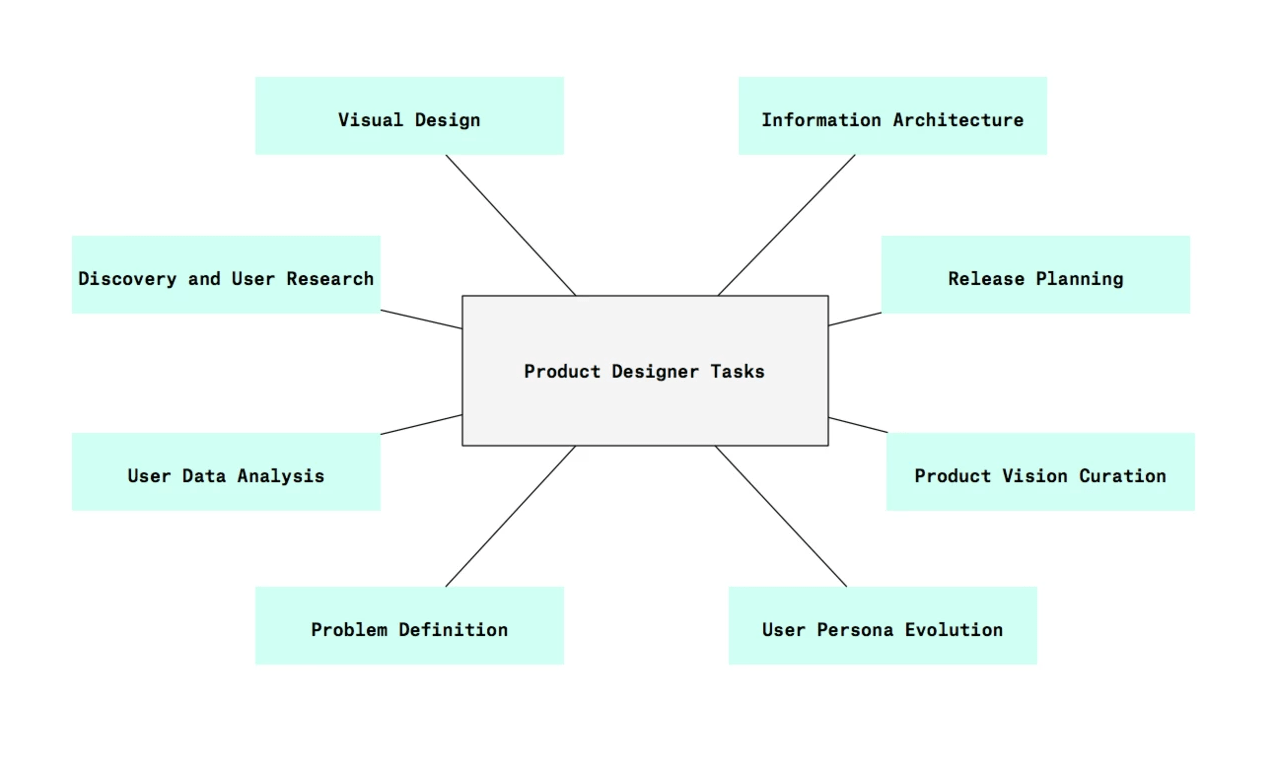A Product Designer Performance Rubric
When I was the Product Design Manager at General Assembly(GA) I made a concerted effort to ensure our Product Designers knew what "good" looked like. A guide for personal development and growth as a Product Designer at GA.
- To define the core competencies of a Product Designer at GA.
- To define the unique mix of skills, behaviors and traits that lead to being successful.
- To give Product Designers clarity for what’s expected of their position.
- To provide measurable competencies for which to track performance during mid-year and end-year performance reviews.
- To give employees outside of Product Design clarity on what’s expected of us.
The Mission
First, the team needs a mission to align behind. This "mission statement" should be crafted together and referred back to and evolved regularly.
"We are focused on crafting a physical and digital ecosystem deeply rooted in providing value to our students, instructors, employers, and internal users. Through this work, we take on the responsibility of fostering a consistent brand and a company culture that believes in the value of the customer experience."
High Level Technical Skills
User Centered Desgin Skill Tasks
High Level User-Centered Design Skills
User Centered Desgin Skill Rubric
Lominger Competencies
There are 67 competencies that are used as a common denominator in defining success for a particular position. While you could find that nearly all roles require most of the competencies on the list, the goal is to outline the key competencies needed for success in this role. Each individual Designer may have competency areas in which they want to strengthen further, but the top 5 key ones are described below:
My Top 5
| Competency | Definition |
|---|---|
| Customer Focus | Is dedicated to meeting the expectations and requirements of internal and external customers; gets first-hand customer information and uses it for improvements in products and services; acts with customers in mind; establishes and maintains effective relationships with customers and gains their trust and respect. |
| Managing and Measuring Work | Clearly assigns responsibility for tasks and decisions; sets clear objectives and measures; monitors process, progress, and results; designs feedback loops into work. |
| Organizational Agility | Understands the cultures of organizations. Knowledgeable about how organizations work; knows how to get things done both through formal channels and the informal network; understands the origin and reasoning behind key policies, practices, and procedures; understands the cultures of organizations. |
| Personal Learning | Picks up on the need to change personal, interpersonal, and managerial behavior quickly; watches others for their reactions to their attempts to influence and perform, and adjusts; seeks feedback; is sensitive to changing personal demands and requirements and changes accordingly. |
| Problem Solving | Uses rigorous logic and methods to solve difficult problems with effective solutions; probes all fruitful sources for answers; can see hidden problems; is excellent at honest analysis; looks beyond the obvious and doesn't stop at the first answers. |
A Few Additional Guidelines
To go along with the hard skills and competencies, there are a few guidelines I think are useful in setting team expectations. This represents a blending of ideals from each individual on the product design team, compiled into one set of team guidelines. A way to hold eachother accountable:
Learn as much about the Product & Customer as possible (utilize the customer lens, understand the technology stack, the regional regulations, the value propositions, pain-points, bottlenecks, etc)
Be familiar with our industry, read our reviews and our competitor’s, keep an eye on the news and buzz.
Don’t seek design “approval”, instead use critique to refine your concept and gain its acceptance.
Be a self-starter, put yourself out there, take part in the hiring process, present your work, lead a creative weekly, build organizational trust in your role and team, write articles, etc. Don’t wait to be told to take the initiative.
Get clarity around what the key metrics are that you need to perform your job. Seek statistical truth from the Data team. Identify areas where a research project might need to be run in order to fill in and expand on the data.
Aim to understand and alleviate friction along the customer journey.
Foster collaboration throughout the Design & Critique process.
Seek early customer validation or early failure through testing & prototyping.
Tell a complete story, communication and design go hand-in-hand.
Read between the requirements, question things, don't call meetings first, figure it out first then connect.
Keep a decision log of important design decisions that impact your projects and the team.

